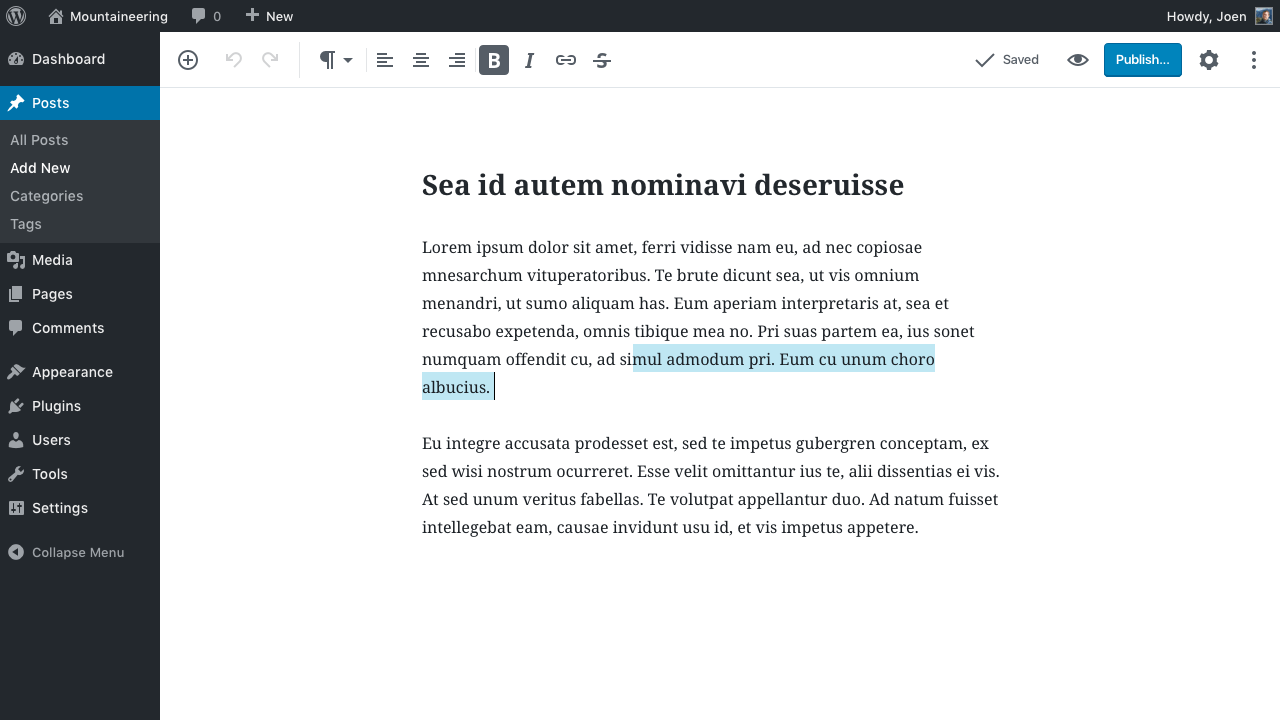
LearnDash and Gutenberg: What to Expect
WordPress 5.0 is coming soon (or so we are told) and with it comes the new Gutenberg editor.
One of the more touchy subjects in WordPress is the new editor that is shipping out with WordPress 5.0. If you aren’t familiar with Gutenberg, then there are an endless number of articles out there to bring you up to speed (like this one).
But, chances are that if you are reading this then you:
- Know what Gutenberg is, and…
- Are using LearnDash
As we have been receiving more questions on the subject I wanted to provide some insight into our approach for Gutenberg and how it impacts you as a LearnDash user.
This is not an opinion piece. Just the facts about what the LearnDash team is up to with regards to WordPress 5.0.
And we have been up to a lot. In fact, preparation for Gutenberg is our top development priority at present.
LearnDash’s Gutenberg compatibility is a multi-phased approach.
If you follow the Gutenberg plugin at all, then you know that they are releasing changes, fixes, and updates at a furious pace. This is great, but also makes it incredibly difficult to prepare for upon the initial release.
We fully expect that there will be many iterations of Gutenberg after its release, and probably for a good amount of time. We also expect the number of patches pushed out to decrease in frequency as everything starts to become more stable. It is because of this that we have opted to take a multi-phase approach to Gutenberg.
PHASE 1: Make sure nothing breaks in LearnDash.
From a development standpoint this isn’t the most exciting project, but it’s the most important. When WordPress 5.0 is released we want you to be able to use the new editor with LearnDash. As such, our first objective is to be “Gutenberg ready”.
Essentially this means you can opt to use all the new features of Gutenberg in your current courses and when creating new ones.
There will be some new REST API endpoints available as well as new Gutenberg blocks for our shortcodes (since TinyMCE is not relevant to the new editor).
Other than that, from a LearnDash perspective you likely won’t notice anything different – and that’s the goal.
PHASE 2: Leverage Gutenberg for improving (or adding new) LearnDash functionality.
After Gutenberg is released and stabilized, we will be in a better position to incorporate its elements into the way you create courses. For example, Gutenberg will provide LearnDash the opportunity to break out of the current rigid template layout logic. This would mean that things like the Course Content table could be its own block and set anywhere within the content.
We have a number of ideas but at this point it’s way too early for us to implement them given how the landscape is continually changing. Another key component to Phase 2 will be the feedback we receive from you. So keep the suggestions coming! 🙂
Once Gutenberg is released, we will advocate using WordPress 5.0.
I think this is an important nuance to mention.
Since our initial release we have always advocated using LearnDash with the latest version of WordPress. This will not change with WordPress 5.0.
I know that there will be the ability to “opt out” of the Gutenberg editor for some time (and you can certainly do so while using LearnDash), but going forward all of our development will be based around the current WordPress version, and that includes the Gutenberg editor.
Our documentation will be updated to reflect this “Gutenberg first” approach by WordPress.
And once support for the old editor is removed from WordPress core then so too will it be from LearnDash.
How you should prepare your LearnDash site for Gutenberg.
With regards to our plugin, you don’t have to do anything because that’s on us.
In the interim, I would strongly recommend that you find out how the other plugins on your site are preparing for Gutenberg.
Why?
Because if something in LearnDash were to break because another plugin on your site isn’t compatible then that is something you will want to know.
As mentioned above, we are taking a Gutenberg-first approach (the “WordPress way”). If a plugin on your site causes a conflict because they are behind in their adoption, then that is something that you will need to take up with their support. We won’t be able to fix any conflicts caused by third party themes or plugins.
Other than that, there isn’t much else you need to do to prepare for Gutenberg with your LearnDash powered courses.
So to summarize:
- Gutenberg is #1 development priority for us at present
- Phase 1 is to make sure nothing breaks
- Phase 2 is to leverage Gutenberg for new (or improved) functionality
- After its release we will always advocate using Gutenberg and not the old editor
Exciting times are ahead for both WordPress and LearnDash. Yes, there will be growing pains, but the end result is worth it.

Justin Ferriman
@LearnDashLMS






